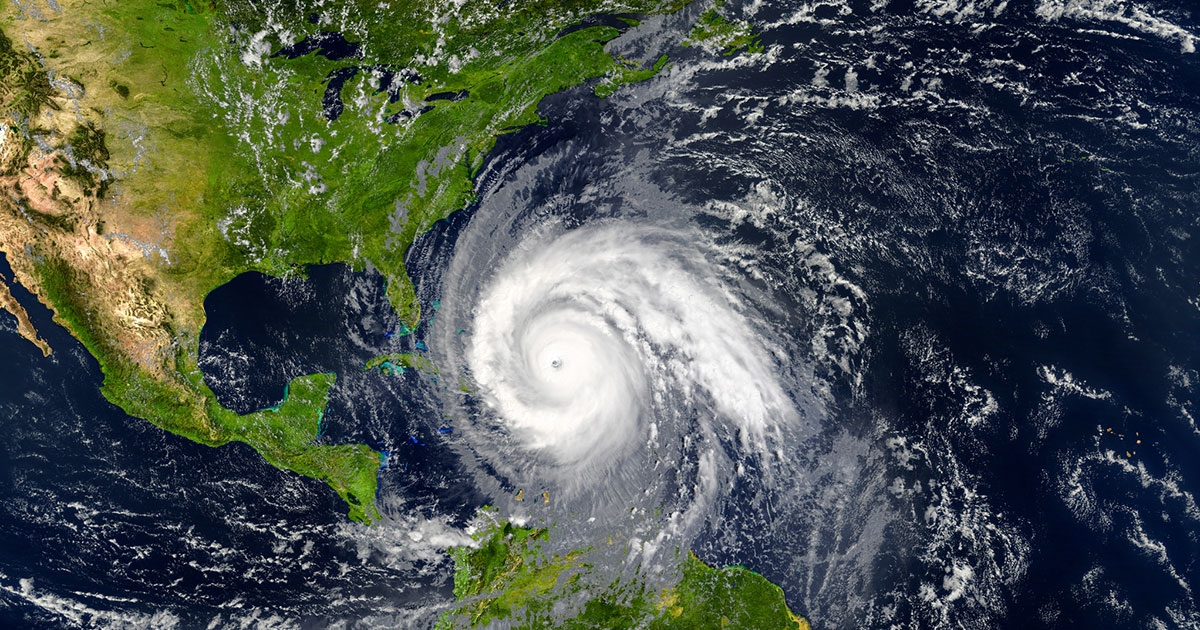
Riders of the Storm: Invasive Species
First Ana, then Bill, and now Claudette. Relatively short-lived and inconspicuous tropical storms, but the first names on the roster for 2021’s Atlantic hurricane season (June 1 through November 30). Once again, NOAA’s Climate Prediction Center is forecasting “above normal” storm activity with 13 to 20 named storms, 6 to 10 of which will likely develop into full-fledged hurricanes (74 – 110 mph), with 3 to 5 strengthening to major status (CAT 3 – 5; >111 mph winds).
And it’s not just storm frequency that is cause for concern; statistics show that the number of CAT 3-5 events per season has increased from around 1.6 per year in the 1970s/80s to 3.1-3.8 per year in the 2000/10s, resulting in stronger winds, heavier rains, and more powerful storm surges to US coastlines.
Greater storm intensity is, naturally, a source of mounting unease for coastal communities. The widespread—and often deadly—destruction that major cyclonic systems leave in their wake is well-documented. But they also bring a less obvious threat to coastal ecosystems, namely the influx of invasive species.
HURRICANE HITCHHIKERS
Hurricane Isaias was the ninth named storm of the 2020 season and was upgraded to a Category 1 Hurricane on July 31 before as it made landfall in the Bahamas. The system then skirted the east coast of Florida and Georgia, before making landfall again in North Carolina. It brought sustain winds of more than 85mph—causing the usual chaos of power outages, downed trees, etc.—and significant storm surge to the coastline. It also brought unwelcome guests, as identified by scientists form the USGS’s Nonindigenous Aquatic Species team who found that the rising waters gave passage to at least 114 non-native aquatic species to ride from one watershed to the next.
Analysis of this hurricane-assisted migration is relatively new and, as of 2017, the USGS has started to correlate flood data with sightings of invasive species, in an attempt to track their spread. Some creatures, such as the apple snail, have been identified as very apt “riders of the storm.” Originally native to South America, this large freshwater mollusk has escaped the constrains of the aquarium trade and become a dogged pest in aquatic croplands. Apple snails take air into their shell to enable them to float on the water’s surface. More extreme weather means more storm surge, which in turn means more mileage for the Apple snail. For coastal ecosystems, this means further destruction long after the water subsides.
Given the chance and climatic conditions, invasive species can reproduce, proliferate and crowd native species quickly. From there, they will start to restructure food webs and create new habitats. When populations reach a critical volume, they start to outcompete native species. The zebra mussel is another mollusk wreaking havoc on the US. Native to the Caspian Sea, its introduction to US was likely via ballast water in the 1980s. They have now spread—hurricane hurried—down the Mississippi and into the mid-Atlantic region. In addition to ousting native mussels, the species is also responsible for millions of dollars of damage year on year and is a persistent threat to critical infrastructure serving municipal drinking water and irrigation.
Florida has long been seen as one of the main gateways for invasive species. The proliferation of Burmese pythons in the Everglades has famously been blamed on the damage caused by Hurricane Andrew in 1992. As has the devastating release of captive red lionfish, which have since decimated native fish populations. Whether true or not, the population explosion of this non-native species has forever altered reef ecosystems along Florida’s coastline.
SEEDS OF CHANGE
Plants and trees are also getting in on the act. Hurricanes produce the ideal conditions for non-native flora and fauna invasions. In short, the rules of forest ecology mean that storm forces—hurricane-force winds or sea water—destroy native foliage and hence increase the availability of light and room for invasive species. At the same time, the winds and storm surge facilitate the dispersal of invasive plant seeds.
Certain non-natives trees in north Florida, for example, pose very real problems, such as the Kudzu—a perennial burden in the southern US—and the Japanese climbing fern. Both threaten to spread from coastal regions to the floodplains of the Apalachicola River and the Chipola River and ravage the surrounding agricultural land.
Florida already spends an estimated $100 million each year on managing its more than 1,300 invasive plant species. The trifactor of (regular) interaction with extreme weather systems, hospitable climate, and flat topography create the perfect storm for the hijacking of local biodiversity, by mand or by water.
Modern-day advances in marine survey techniques, both of coastal and inland waters, are sure to help with the tracking of invasive species. Today, we have available a new ecosystem of smart sensors and devices that can assist us with the spread, above and below the waterline. Breakthroughs in sensing technology and automated systems are transforming our ability to process, analyze, and manage large swaths of complex data. The decade will prove transformative to our understanding of how weather pattens—and other coastal phenomena—continue to tilt the ecological balance.
At CSA Ocean Sciences, we run multi-disciplinary environmental studies of a wide variety of marine ecosystems. Our Subject Matter Experts have the background in marine impact assessment, monitoring and mitigation to help identify stressors, like extreme weather systems, on sensitive coastal environments.
Find out more about our services.
Corporate Headquarters
8502 SW Kansas Ave.
Stuart, FL 34997
Recent Blogs
- Supporting the Realization of Sustainable Energy at the Caribbean Sustainable Energy Conference 2024 Jun 24, 2024
- CSA Provides Planning and Field Support for First Carbon Sequestration Ocean Experiments by Gigablue® May 16, 2024
- PSO Reports Prove Fruitful for Environmental Impact Assessments Apr 15, 2024

